
Winter Pest Control in Charleston, SC
Charleston’s winter is more “jacket weather” than deep freeze, but that’s exactly why pests keep moving when other parts of the country go quiet. Our Lowcountry mix of damp cold snaps, stormy fronts, and sudden warm-ups encourages insects and rodents to abandon soggy mulch beds, leaky sheds, and marsh-edge thickets for the warmth of human spaces. Historic single houses with long side piazzas, raised cottages on brick piers, and newer homes with complex rooflines all share a vulnerability: plenty of hidden seams, vents, and utility penetrations where pests slip inside to find shelter, food, and water. Add the moisture dynamics of ventilated crawl spaces, king-tide splash zones, and shaded landscaping, and winter becomes less of an “off-season” and more of a migration. That’s why a Charleston-smart plan focuses on tightening the building shell, drying trouble spots, and targeting pests where they actually live—voids, seams, and protected edges—rather than broadcasting products across living areas.
All U Need Pest Control delivers winter pest control in Charleston, SC designed for our coastal conditions. We serve the Peninsula and Downtown, West Ashley, Mount Pleasant, North Charleston, Daniel Island, James Island, Johns Island, Hanahan, Goose Creek, and Summerville, plus barrier islands including Folly Beach, Sullivan’s Island, and Isle of Palms. Our approach blends detailed inspection with precise treatments and practical prevention, so your home stays calm and comfortable through the holidays, nor’easters, and those springlike afternoons that tease pests out of hiding. To make it easy, we pair clear prep guidance with tidy, on-time service and a satisfaction guarantee.
Pest Control Services in Charleston, SC
- Ant Control
- Bed Bug Control
- Beetle Control
- Cockroach Control
- Flea Control
- Home General Pest Control
- Hornet Control
- Millipede Control
- Mosquito Control
- Pantry Pest Control
- Rat & Rodent Control
- Scorpion Control
- Silverfish Control
- Spider Control
- Stink Bug Control
- Termite Control
- Tick Control
- Wasp Control
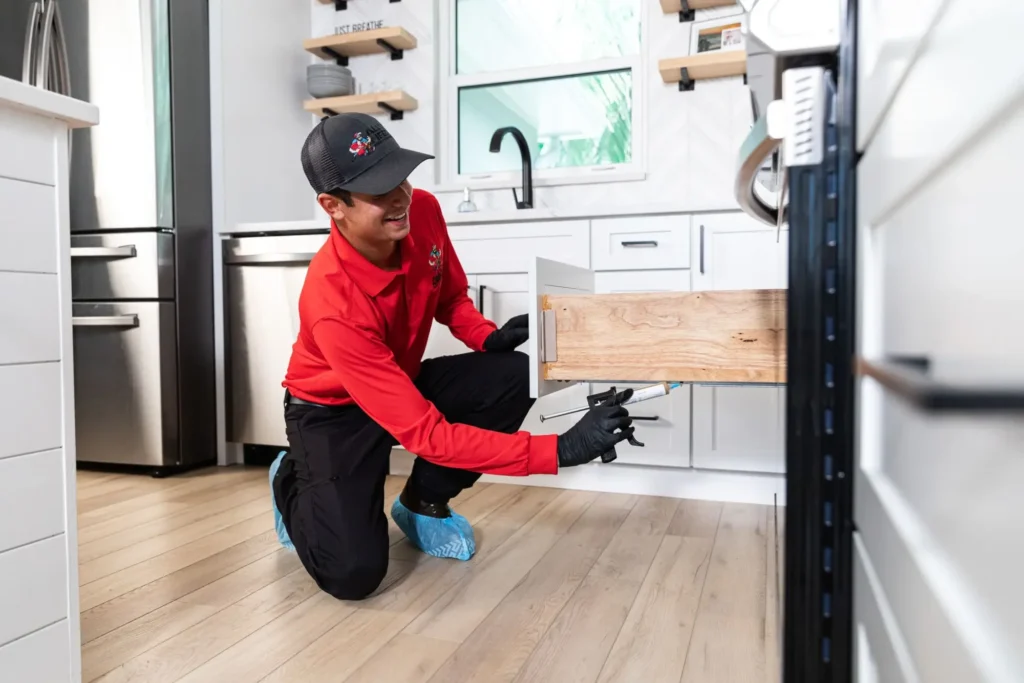
Winter Pest Treatment
No two Charleston homes behave the same in winter. A 19th-century single with heart-pine floors breathes differently than a slab-on-grade ranch; a raised cottage over a breezy crawl space dries faster on clear days but can wick moisture after storms. Your plan begins with that context: the architecture, the orientation to sun and wind, and the microclimates created by live oaks, palmettos, and surrounding structures. From there we establish a simple sequence—find the pressure, neutralize it at the source, and harden the structure so the pattern doesn’t repeat every time the temperature dips.
Inspection
We start outside and move in, because Charleston winter problems usually begin at the perimeter. Along the foundation, we note mulch and pine straw against siding, low grade that channels water back toward brick piers, and vegetation that keeps the first foot of wall damp. We check for daylight beneath doors, worn sweeps, loose thresholds, and the hairline gaps where trim meets masonry. Attic and gable vents are evaluated for both airflow and screening—winter is when rodents and overwintering insects exploit torn mesh. We pay special attention to weep holes in brick, soffit and fascia intersections, porch steps, lattice seams, meter boxes, and penetrations for gas, cable, and HVAC lines. After heavy rain or a king tide, these edges stay humid and warm just long enough to attract roaches, silverfish, and ants looking for the calm side of the weather.
Indoors, we follow the moisture and the meals. Kitchens and laundry rooms tell the truth: pepper-like roach droppings near appliances, smears along baseboards, or a musty odor suggest active foraging. In bathrooms and under sinks, we probe for condensation, seepage, and the gaps where plumbing passes through wood—prime runways for roaches and ants on warm spells. In attics and crawl spaces, we look for rodent rub marks on joists, fresh droppings, gnawing on stored goods or wiring, and compressed insulation that telegraphs travel lanes. A few quiet minutes with a flashlight at dusk often reveals more than any trap—winter pests follow routines, and those routines leave evidence.
Treatment
With the map in hand, we treat where it matters most. Inside, we favor crack-and-crevice precision along the interior sides of windows, doors, and thresholds; in toe-kicks below cabinets; and inside plumbing and electrical chases that link kitchens, baths, and utility rooms. Where roaches or ants are the drivers, we deploy fresh, species-specific baits that work while you go about normal life, and we anchor discreet monitors to verify progress without cluttering surfaces. If rodents are present, we prioritize mechanical capture and structural exclusion over baits indoors to avoid odor issues, using professional traps placed on runways and protected from pets and children.
Outside, we build a narrow, durable perimeter. Treatments along soffit seams, fascia joints, and entry trims intercept insects at the exact places they land and explore; spot applications at lattice seams, crawl-space doors, and sill interfaces disrupt the sheltered edges that winter pests use like highways. We adjust formulations and timing around weather windows so applications set properly even in damp air. When appropriate, we add breathable inserts to masonry weep holes, screen gable and attic vents with pest-rated mesh that maintains airflow, and tune door hardware so the “light leaks” that advertise warmth disappear. The result is a quieter interior with fewer visitors and less need for broad interior treatments.
Prevention
Winter prevention is equal parts dryness, cleanliness, and access control. We’ll recommend simple, sustainable habits that fit Charleston living. Pull pine straw and mulch back a few inches from siding so sun and breeze can dry the wall line. Elevate firewood off the ground and away from the house. Swap cardboard for sealed plastic bins in garages and under-porch storage to reduce harborage and musty odors. Run bath fans long enough to clear steam; add a compact dehumidifier in persistently damp rooms; and keep crawl-space vapor barriers intact. Indoors, store pantry goods and pet food in airtight containers, wipe shelf seams, and empty trash regularly so winter foragers never get rewarded. Small habits build a big advantage when the weather turns.
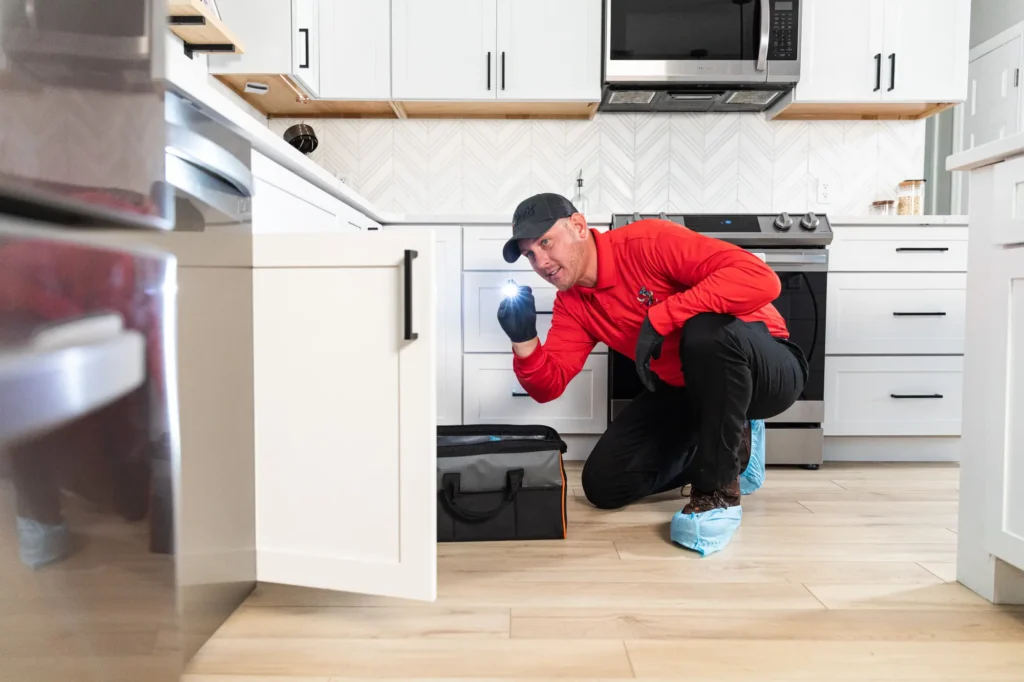
Identifying Winter Pests
Charleston’s “winter mix” includes a few usual suspects. American and German cockroaches ride out cold nights in warm kitchens, laundry rooms, and utility chases; telltale signs include peppery droppings, egg cases, and a faint, oily odor in tight spaces. Roof rats and house mice shift into attics and the warm side of crawl spaces, leaving rice-sized droppings, gnaw marks, and polished rub trails along joists and sills; evening scratching in walls or ceilings often pinpoints their routes. Spiders follow insect prey, so renewed webbing around entry lights and porch ceilings signals exterior insect pressure more than a “spider problem” by itself. Stink bugs and other overwintering invaders gather on sunny walls after cold fronts and filter indoors through soffit gaps or around window casings. On mild afternoons, ants can reappear at sink edges or along baseboards, exploiting moisture and crumbs, while silverfish gravitate to closets and bookcases in older homes with subtle humidity pockets. Even fleas may persist indoors if pets provide warmth, which is why coordinated vet preventives remain valuable year-round here.
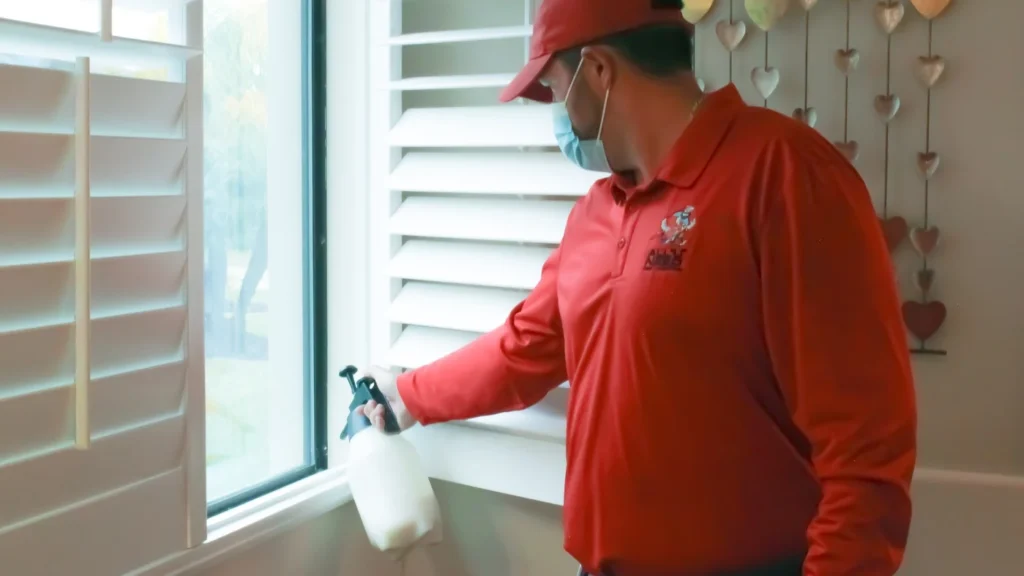
Effective Treatment Strategies
Durable winter control grows from Integrated Pest Management (IPM)—a simple idea done thoroughly. We start by removing reasons to stay: excess moisture, easy calories, and quiet clutter. Then we put precise tools exactly where pests live and travel. Baits belong on foraging lines, not random corners. Dusts belong in sealed, dry voids where they work for months, not on open surfaces. Traps belong along rodent runways—wall edges, behind appliances, and near utility chases—locked down, mapped, and checked until captures stop. On the exterior, we favor small, targeted applications at seams and landing zones rather than paint-roller coverage; the goal is to intercept explorers at the door, not perfume the yard. Most important, we verify. Monitors, trap counts, and follow-up walkthroughs confirm that the plan is cutting activity, and we adjust placements quickly if pressure shifts after a storm cycle or a sudden warm spell.
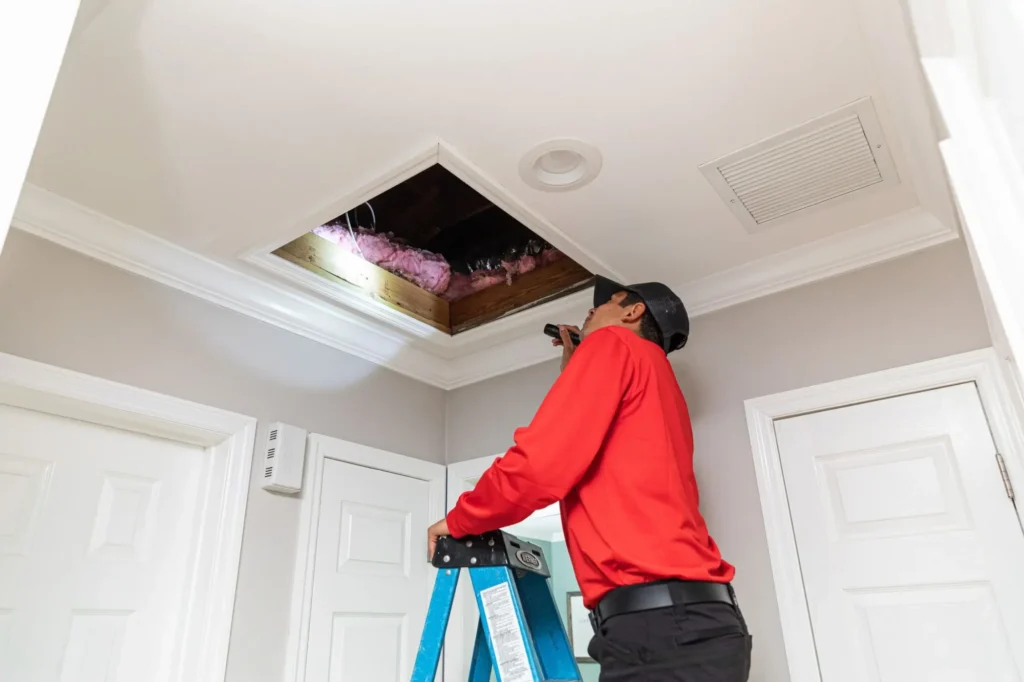
What Kinds of Pests Come Out in the Winter?
Even when the calendar says “winter,” Charleston behaves like a long shoulder season. Mice and rats are year-round here, but activity spikes when nor’easters or cold rains drive them from soggy hedgerows into the calm of attics and crawl spaces. Cockroaches don’t hibernate; they cluster in warm, wet microhabitats—dishwashers, fridge motors, water heaters—then fan out at night to forage. Stink bugs and other overwintering insects sun themselves on south- and west-facing siding after fronts pass, slipping indoors through soffit laps and window reveals. Ants exploit the first warm afternoon to scout kitchens, especially where sink leaks or condensation keep wood damp. Silverfish and spiders track humidity and prey, so they rise and fall with indoor moisture management. In short: winter is less about which species “wake up” and more about how our buildings and habits tip the invitation from “maybe” to “yes.”
Eco-Friendly Solutions
Charleston’s coastal environment rewards restraint and precision. Our default is to solve problems with the least product necessary—and to put it only where it works hardest. That begins with exclusion and moisture control; a tightened, drier shell needs far less chemistry. When we do apply products, we prefer low-odor, modern formulations and professional placements that keep activity away from living spaces and pollinators. In select voids, desiccant dusts provide long-term suppression without volatility. If you prefer botanical options indoors, we can bias toward those while maintaining strong exterior interception at seams and landing zones. Throughout, we’re transparent about what we use, why we chose it, and how it supports your goals.
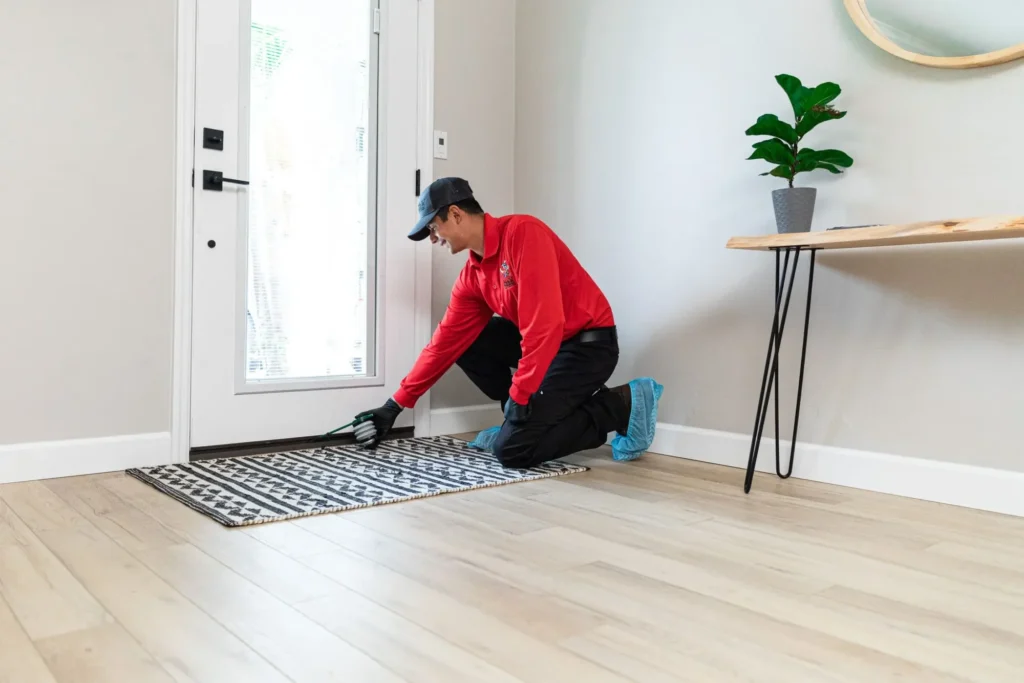
How to Prevent Winter Pests in Charleston, SC
Think of prevention as small, repeatable wins that compound over the season. Start at the doors: adjust thresholds so you can’t see daylight and install snug sweeps that survive sandy porches and frequent use. Refresh weatherstripping on side and garage entries; tighten the latch on crawl-space doors and seal the gaps along their frames. Walk the exterior after a hard rain and watch where water lingers—regrade low spots that pool near steps or piers, extend downspouts, and repair gutter leaks so foundation walls dry fast. Pull pine straw and mulch back from siding to create a narrow, mineral border that warms and dries in the sun. Trim ivy and jasmine off wood and brick; lift shrubs and hedges so air can move beneath, and avoid stacking planters and décor against walls through the winter months.
Inside, treat kitchens and utility rooms like the engine rooms they are. Keep sink bases dry and organized; wipe shelf seams so crumbs don’t accumulate; store staple foods and pet kibble in airtight containers rather than bags that crease open. Run bath and kitchen fans long enough to clear steam and use a small dehumidifier where dew settles on cold mornings. In closets and under beds, swap cardboard for sealed plastic bins and raise storage an inch or two to improve airflow. A quick vacuum pass along baseboards every week or two removes the fine debris that insects use as cover. For attics and crawl spaces, maintain vapor barriers, ensure vents are screened with pest-rated mesh that preserves airflow, and consider encapsulation if humidity refuses to drop even in winter. Each step is simple, but together they deny pests the three things they chase in winter: warmth, water, and quiet.
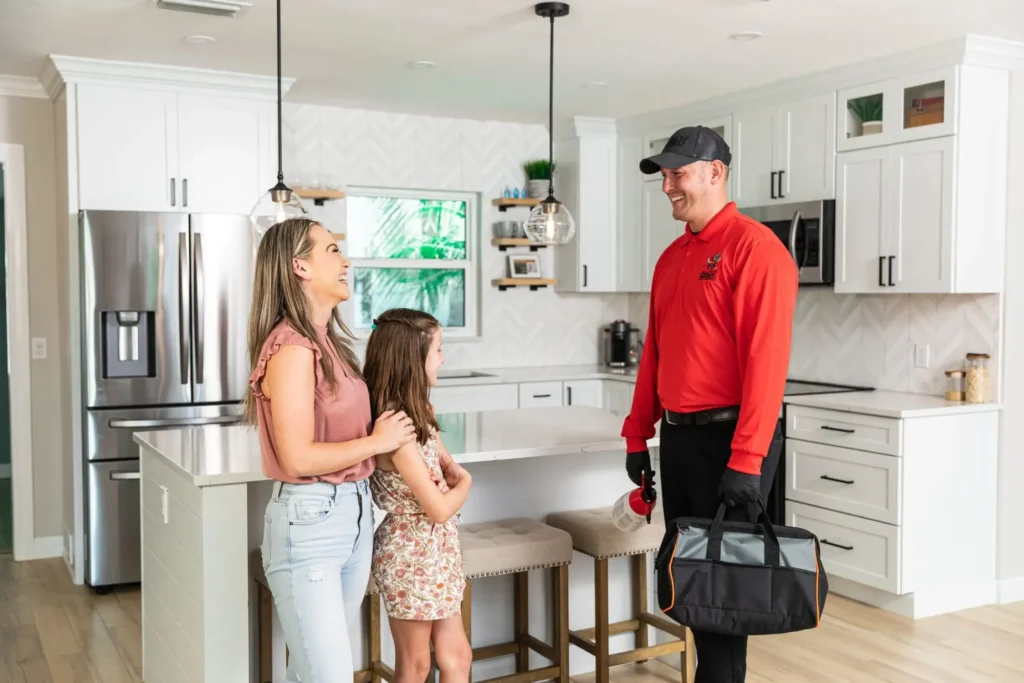
Service Experience, Pricing, and Follow-Through
Good winter service should feel light on your schedule and heavy on results. We set a narrow arrival window, walk the property with you to confirm priorities, and explain what we’ll do and why before we begin. If children, guests, or pets require altered placement or timing, we work around them—most interior applications are discreet and dry quickly, and many services can be performed primarily from the exterior once the initial interior issues are under control. Pricing is straightforward: an initial winter stabilization that addresses today’s pressure, followed by an optional maintenance plan that keeps the exterior tuned through cold snaps and spring warm-ups. You’ll get a written summary after each visit that documents findings, products, placements, and recommended next steps. If activity persists, we return to investigate and adjust—no surprises and no runaround.

Why Charleston Homes Choose All U Need Pest Control
The difference between “sprayed” and “solved” in winter is local know-how. Our technicians understand how a Charleston single exhales through old plaster, where rodents prefer to cross a pier-and-beam crawl, and why soffit laps over a live-oak canopy need special attention after every wind event. We’ve seen the way king tides shift pressure in riverside neighborhoods, how alley-side dumpsters influence downtown roach activity, and how one torn attic screen can invite a season’s worth of trouble. That experience informs a calmer, more surgical service: we don’t guess, we don’t oversell, and we don’t leave you to “wait and see.” We measure, adjust, and communicate until your home is quiet.
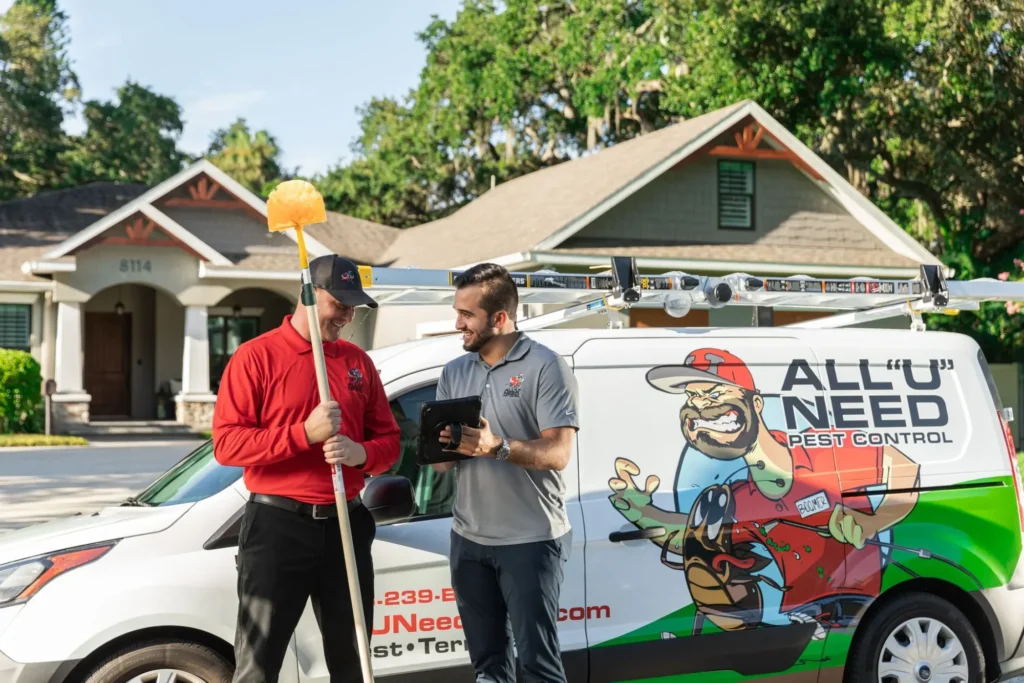
Ready for a Calmer Winter?
Winter pests don’t have to share your porch evenings or holiday mornings. With All U Need Pest Control, you get a Charleston-specific roadmap: tighten the shell, dry the edges, treat the hidden runways, and maintain a light, steady defense that respects your family and our coastal environment. Whether you’re managing a historic single off Rutledge, a raised cottage in West Ashley, a townhome on Daniel Island, or a beach property on Folly, we’ll tailor the plan to your structure and routine—and keep it current as weather shifts.
If you’re seeing droppings, hearing scratching, or chasing roaches away from the dishwasher light, don’t wait for “real winter” to fix a Lowcountry problem. Call 1-888-239-BUGS (1-888-239-2847) or request your free inspection online. We’ll inspect, treat, and fortify—so you can relax through the cold snaps, confident that the only things settling in this season are you and the people you love.
Location Contact:
419 N Cedar St Summerville, SC 29483
Get Directions for 419 N Cedar StSummerville, SC 29483 on Google Maps843-489-8818
Call All "U" Need Pest Control